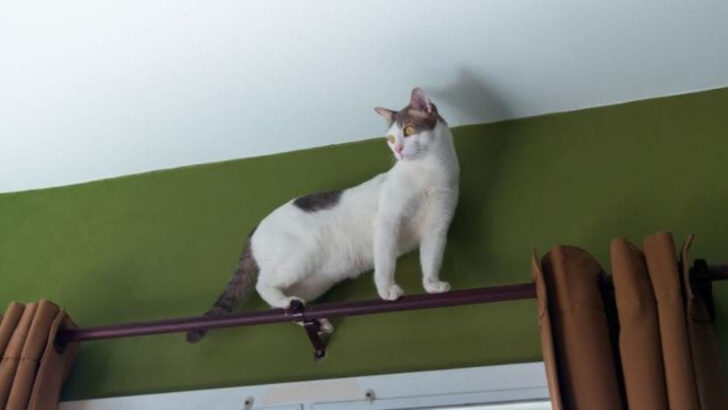Your indoor cat is hiding more than just your socks under the couch. Behind those slow blinks and nap marathons lies a world of secrets—stealthy instincts, strange rituals, and mysterious motives you never saw coming. You might think your cat is lazy, aloof, or obsessed with knocking things off shelves just to mess with you. But there’s so much more going on in that furry little head. These 20 feline truths will flip what you thought you knew. From subtle signs of affection to deeply rooted survival tactics, your indoor cat is a walking paradox: pampered yet primal, cuddly yet cunning. Once you learn what’s really going on behind those whiskers, you’ll never look at your quiet housemate the same way again.
Purrfect Communication
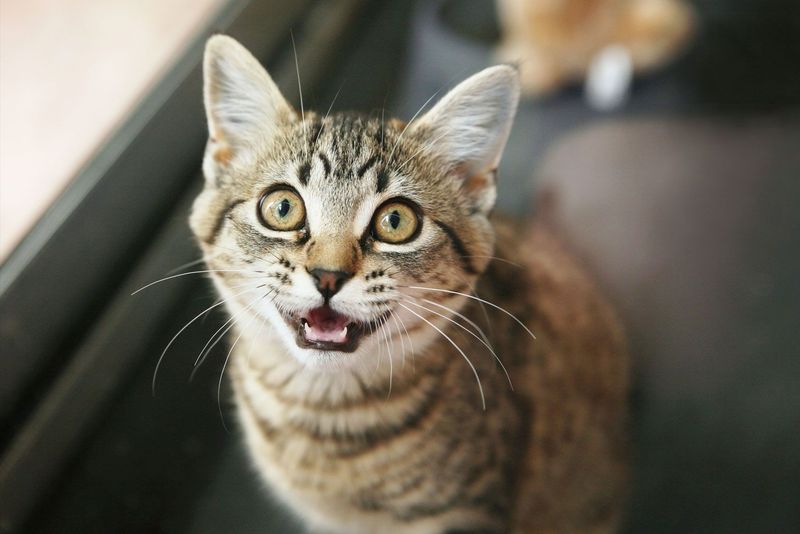
Indoor cats have a unique language composed of purrs, meows, and body language. Each sound and gesture conveys distinct meanings. It’s like a symphony of emotions expressed through their bodies and vocal chords. For instance, did you know a slow blink is equivalent to a kitty kiss? When your cat gives you that dreamy gaze, it’s signaling affection.
Furthermore, certain meows are reserved for specific human-cat interactions. They might use a high-pitched meow to grab attention, while a low growl suggests discontent. Observing these nuances can enrich your relationship with your feline friend.
The Play-Hunt Paradox
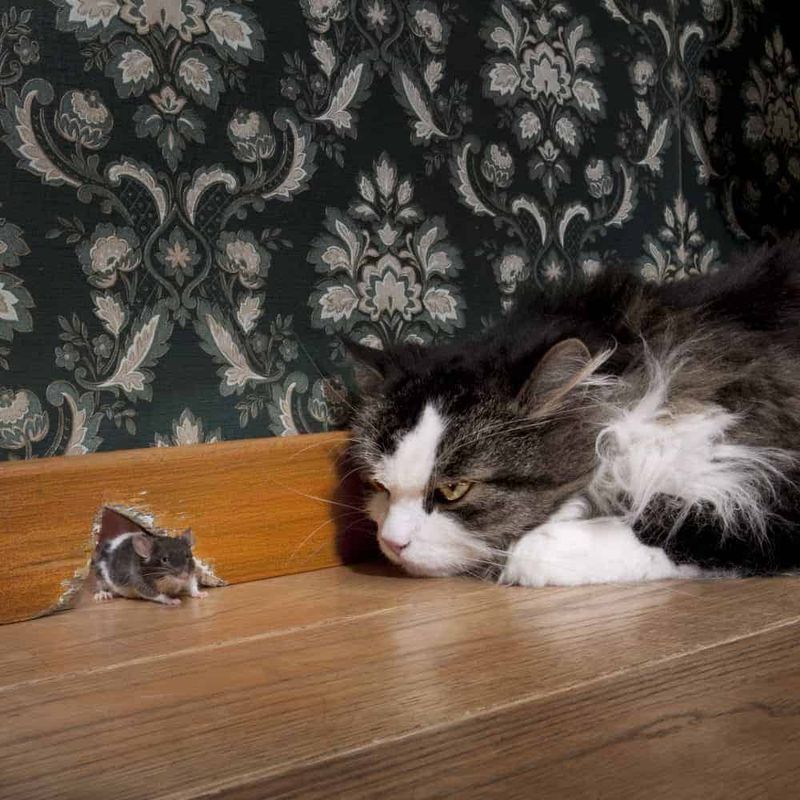
Every indoor cat is a hunter at heart, even if their prey is a feather toy or a piece of string. This play-hunt behavior is not just recreation; it’s essential for their mental and physical health. When cats play, they mimic the stalking, pouncing, and chasing techniques of their wild ancestors.
This instinctual behavior keeps them sharp and agile, preventing boredom and potential behavioral issues. Understanding this need can help cat owners provide more engaging activities, ensuring their indoor companions stay happy and stimulated. So next time your cat stalks a toy, it’s honing its natural instincts.
Curious Climber

Have you ever wondered why your cat loves to climb? Indoor cats often seek high vantage points, much like their wild relatives. Scaling furniture or cat trees allows them to observe their surroundings and feel secure. It’s a blend of curiosity and a quest for safety.
Providing ample vertical space through shelves or cat trees can satisfy this natural craving. This doesn’t just keep them entertained; it also enhances their environment, giving them a sense of territory and control. By understanding this inclination, you can create a more enriching space for your feline explorer.
Nighttime Wanderers
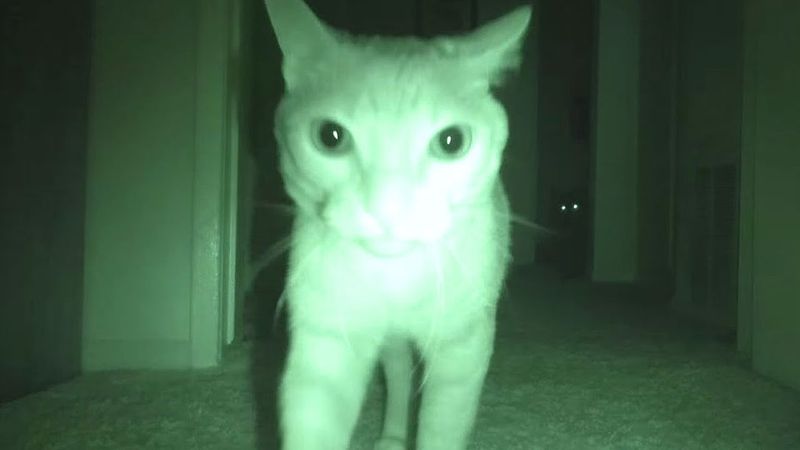
Ever noticed your cat’s nocturnal adventures? Indoor cats often become more active at night, mirroring their wild ancestors’ hunting schedules. This night-time energy burst is part of their natural rhythm, known as crepuscular behavior.
During these hours, cats feel more alive and playful, often engaging in solo play or exploring their territory. Understanding this can help you cater to their needs by providing night-time toys or activities. While it might disturb your sleep, acknowledging their night-time nature fosters a deeper understanding of your feline’s instinctual behavior.
Whisker Wisdom
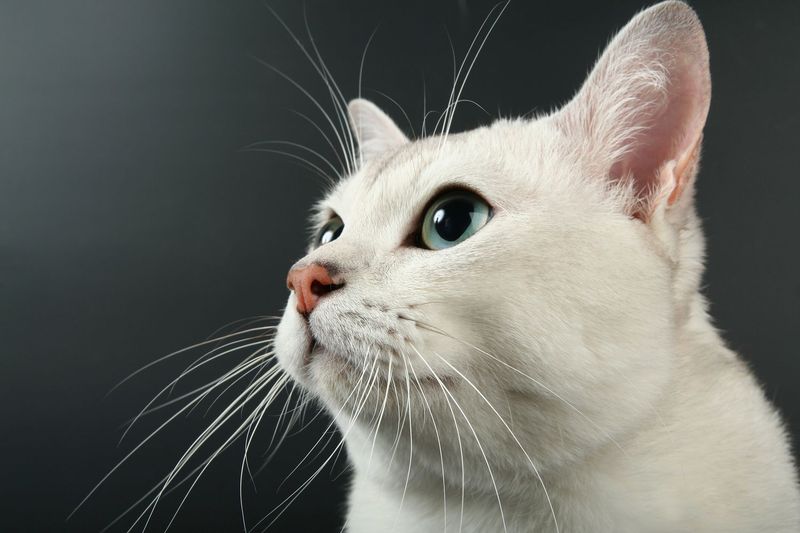
Whiskers are more than just adorable features on your cat’s face; they are sophisticated sensory tools. Each one is packed with nerve endings, helping cats detect changes in their environment. These sensitive hairs guide them through narrow spaces and aid in hunting and navigation.
Interestingly, whiskers can also reflect a cat’s mood. Forward-pointing whiskers indicate curiosity, while whiskers pulled back might suggest fear or stress. Recognizing these signs can give you insight into your cat’s feelings and behavior. By appreciating their whisker wisdom, you can better understand and respond to your pet’s needs.
Food Time Rituals

Cats are creatures of habit, especially when it comes to mealtime. Indoor cats often develop rituals around feeding times. This can include circling their food bowl, meowing persistently, or even sitting in specific spots until served. These behaviors are their way of communicating hunger and anticipation.
Mealtime rituals provide insight into your cat’s personality and preferences. Some cats prefer solitude during meals, while others enjoy human company. Understanding these quirks can help in creating a comfortable feeding environment, ensuring your cat feels secure and content during their daily dining routine.
Sunspot Loungers
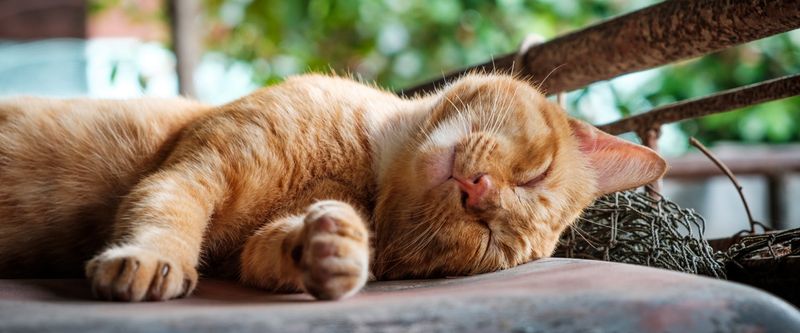
Indoor cats are often found lounging in sunspots, soaking up the warmth and enjoying their version of sunbathing. This behavior is not just about comfort; it’s rooted in their biology. Sunlight aids in regulating their body temperature and provides a sense of security.
Creating sunny spots with sunlit windows or heated beds can enhance your cat’s indoor environment. This allows them to indulge in their natural sun-loving tendencies, promoting relaxation and well-being. Understanding this preference can help you design a home that caters to their needs, making their indoor life more fulfilling.
Feline Feng Shui
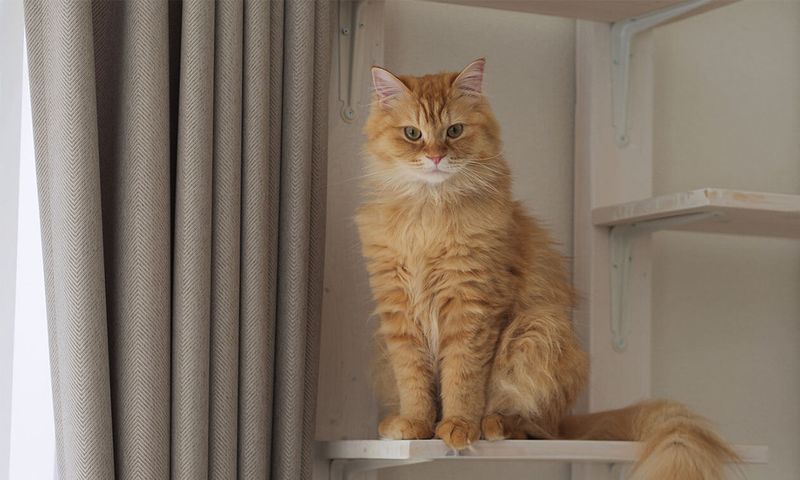
Did you know your cat might be a natural at arranging your home’s energy? Cats often gravitate towards certain spots in the home, influencing the ambiance and dynamics of living spaces. This behavior is reflective of their sensitivity to energy flows and comfort zones.
Observing where your cat likes to rest can offer insights into the best spots for relaxation and tranquility. By aligning your furniture with these feline-approved areas, you can create a harmonious home environment that caters to both human and cat preferences, enhancing the overall energy of your living space.
The Paper Chase
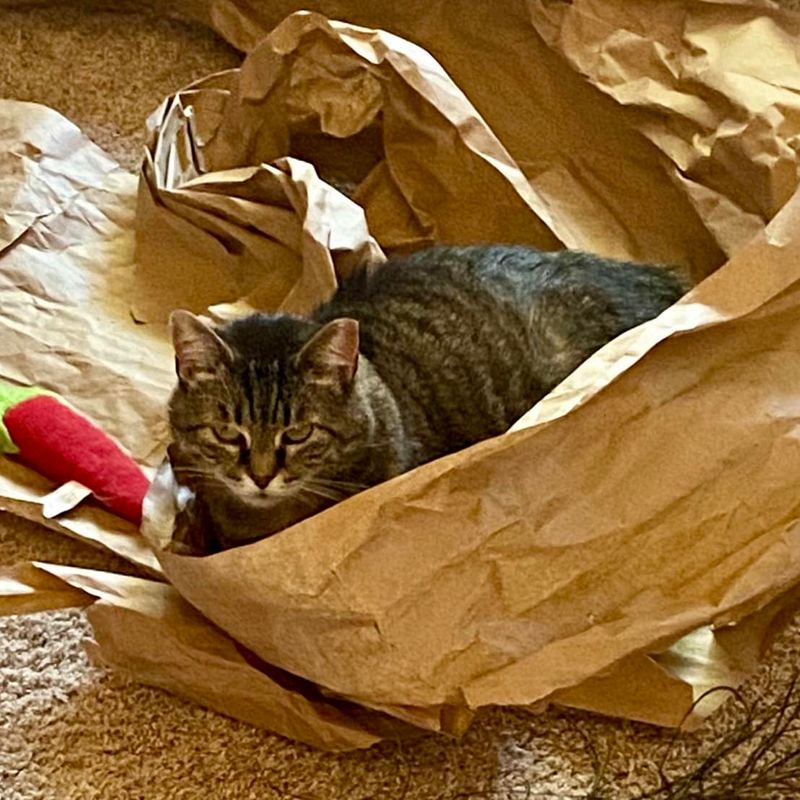
Ever noticed a cat’s fascination with paper? From newspapers to wrapping paper, cats seem to love the texture and crinkling sound. This attraction is more than just playful curiosity; it’s a sensory delight. The sound and feel of paper stimulate their senses, offering both entertainment and a cozy resting spot.
Providing old newspapers or paper bags as toys can be a simple yet effective way to entertain your indoor cat. Understanding this behavior can help keep your furry friend amused and mentally stimulated, ensuring they remain happy and content in their domestic haven.
Paw Preference

Just like humans, cats can be right or left-pawed, a preference that contributes to their individuality. Observing which paw your cat uses first can reveal this trait. It’s a fascinating insight into their personality, adding another layer to their unique character.
This paw preference can also influence how they interact with their environment, from playing with toys to navigating obstacles. Recognizing your cat’s dominant paw can enhance your understanding of their behavior and preferences. It’s another charming aspect of these enigmatic creatures that continues to intrigue and endear them to us.
Scent Marking Masters
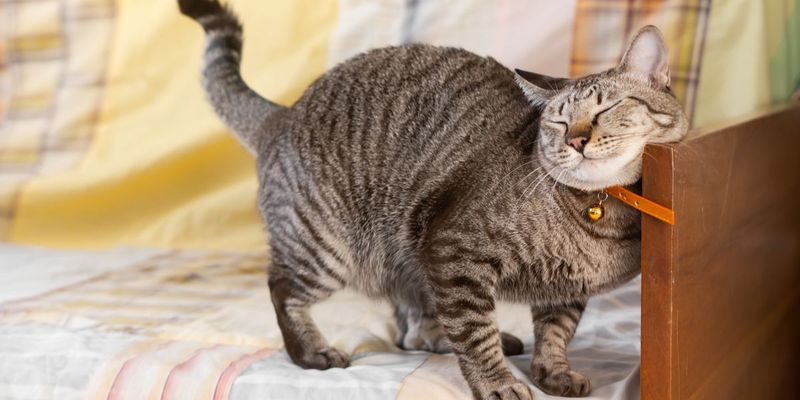
Cats are territorial creatures, and scent marking is a subtle yet powerful method they use to establish ownership. Indoor cats often rub their faces against furniture or people, leaving behind pheromones from scent glands located around their face.
This behavior isn’t just about marking territory; it’s a sign of affection and comfort. By transferring their scent, cats communicate familiarity and trust. Understanding this can help you appreciate the underlying bonds your cat forms with its environment and the people in it. It’s a gentle reminder of the silent, loving connection they share with their world.
The Tail Tells All
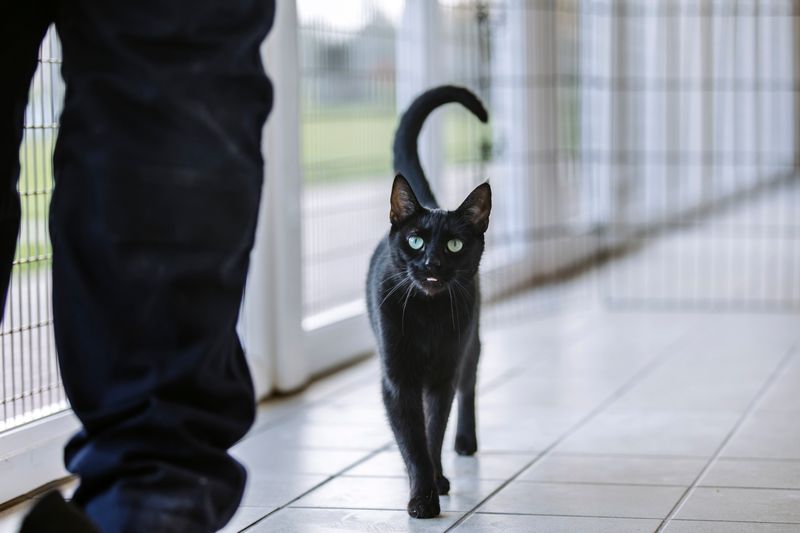
A cat’s tail is more than just an elegant accessory; it’s a vital communication tool. From slow swishes to rapid flicks, every movement conveys a different emotion. A raised tail often signals happiness, while a puffed-up tail indicates fear or aggression.
Observing your cat’s tail language can provide valuable insights into their emotional state. By understanding these signals, you can respond appropriately to their needs, fostering a more harmonious relationship. This silent dialogue is a testament to the intricate ways cats communicate, adding depth to the bond you share with your furry companion.
The Nap Connoisseur
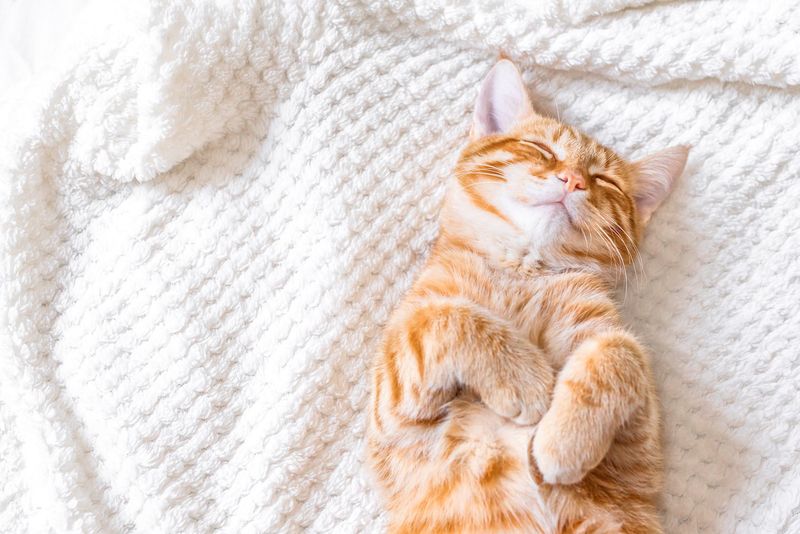
Cats are notorious for their love of naps, and indoor cats are no exception. They can sleep up to 16 hours a day, a habit rooted in their hunting ancestry. While they may appear lazy, these nap sessions are crucial for recharging and maintaining their health.
Understanding your cat’s sleep patterns can help you provide a more accommodating environment. Whether it’s a quiet corner or a plush bed, ensuring they have a comfortable spot for their slumber can significantly enhance their quality of life.
Embracing their napping nature allows for a deeper appreciation of their feline ways.
Grooming Guru

Cats are meticulous groomers, spending hours each day cleaning themselves. This ritual isn’t just about vanity; it’s essential for their health. Grooming helps remove loose fur, distribute natural oils, and maintain their coat’s cleanliness. For indoor cats, grooming can also be a calming activity, reducing stress and anxiety.
Understanding this behavior can help you support your cat’s grooming needs. Regular brushing can prevent hairballs and strengthen the bond between you and your feline. It’s an intimate part of their routine that reflects their commitment to self-care and well-being.
Window Watchers

Indoor cats often spend hours gazing out of windows, captivated by the world beyond. This behavior reflects their curious nature and desire to connect with the outdoors. Watching birds, cars, and passers-by provides mental stimulation, akin to watching a live-action movie.
Creating window perches or providing access to outside views can enhance your cat’s indoor experience. It satisfies their curiosity and allows them to engage with their environment, despite being housebound. This simple addition can enrich their lives, offering a glimpse of the world they instinctively long to explore.
The Purring Paradox

Purring is a unique feline feature, often associated with contentment and comfort. However, cats also purr when in pain or stressed, using the vibrations to soothe themselves. This paradoxical behavior highlights the complexity of their emotional language.
Recognizing different purring contexts can deepen your understanding of your cat’s feelings. It’s a soothing mechanism that can signal both joy and distress. Paying attention to accompanying behaviors and circumstances can help you respond more effectively to your cat’s needs, strengthening your bond and ensuring their well-being.
The Curious Case of Catnip
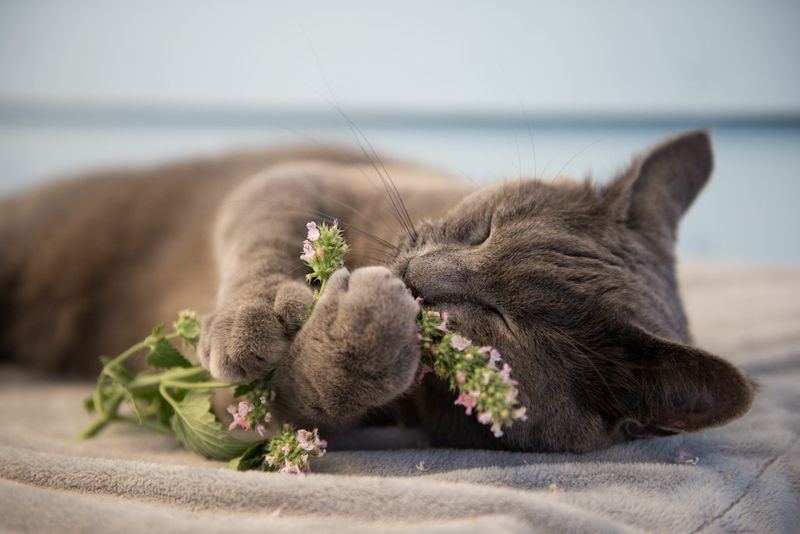
Catnip has a mysterious allure for many cats, triggering unique reactions ranging from playfulness to relaxation. Not all cats are affected, but those that are often exhibit behaviors akin to euphoria. This reaction is due to a compound called nepetalactone, which interacts with receptors in cats’ brains.
Providing catnip toys or plants can offer mental stimulation and entertainment for indoor cats. It’s a fascinating glimpse into the sensory world of felines, revealing another layer of their complex interactions with their environment. Understanding their response to catnip can enrich their playtime and overall happiness.
The Silent Stalker
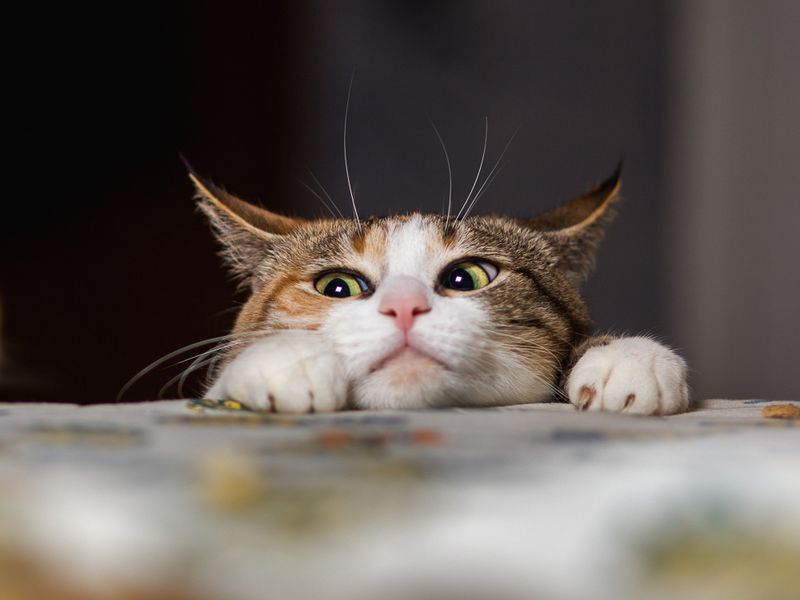
Indoor cats possess an innate stealthiness that mirrors their wild counterparts. Whether it’s stalking a toy or sneaking up on an unsuspecting human, their silent movements are a testament to their predatory instincts.
This behavior is integral to their identity, offering both mental and physical exercise. Providing toys and play opportunities can satisfy these predatory urges, ensuring your cat remains engaged and content. Understanding this aspect of their nature can lead to a more fulfilling relationship, as you embrace their need for stealth and strategy.
The Box Obsession

Cats and boxes are an iconic duo, with many felines showing an irresistible attraction to cardboard containers. This obsession is rooted in their love for small, secure spaces that provide warmth and protection.
Offering boxes can be a simple yet effective way to enrich your cat’s environment. It satisfies their need for security and offers an interactive element to their play. Understanding this quirky behavior can enhance your appreciation of their preferences, helping you create a more engaging and comforting space for your feline friend.
The Enigmatic Echo Hunter
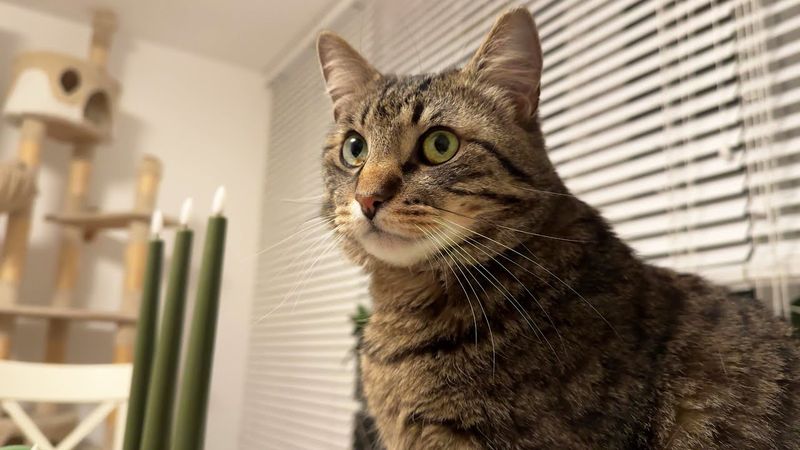
Ever noticed your cat suddenly perk up, alert and focused, as if hearing something invisible to you? Cats possess an incredible sensitivity to sound, detecting frequencies beyond human capacity. They often engage in ‘echo hunting,’ a vigilant behavior where they track subtle sounds bouncing off walls.
It’s fascinating to watch a cat’s ears twitch in response to these auditory cues. This talent not only entertains but also showcases their ancient hunting instincts, refined over millennia.
Next time your cat seems entranced by an unseen presence, they might just be honing their incredible echo detection skills.

